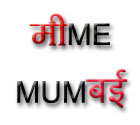A start-up based in Mumbai might have just created history by developing the first Carbon Tile. The first of its kind, this tile which is created by upcycling air pollution has been available on the market since January 22. The product was created by partnering with AIR-INK, a brand that creates ink by a process through which carbon emissions are captured, separated from soot and mixed with different types of solutions. In a step forward, the same process is being used to create the literal building block of our architecture — the humble brick.
1 Carbon Tile is equivalent to cleaning
30,000 litres of air
Tejas Sidnal, founder of Carbon Crafts Design says, “There are now methods to capture pollution. But we asked ourselves the question: What more can we do with this captured pollution? I was intrigued to find a way to upcycle this into a new form. And this had to be an architectural intervention so we can make an impact on a visible scale.” Since 2016, the company has been working on designing this product by creating prototypes of the tile using local methods to capture carbon. The final tiles come under two ranges — inspired by cities and industries — that are specifically meant for indoor use.
_.png)
Why a carbon tile, you wonder? Pollution, my dear Watson. “It is the most important health risk of our time. Among the toxins present in the polluted air, Particulate Matter is the most dangerous. Presently, 9 out of 10 people live in places where air quality exceeds WHO limits. Zooming in towards the causes, it can be found that the construction industry is the largest consumer of raw materials and responsible for 39% of global carbon emissions,” he explains.
How did they arrive at the ordinary tile as a solution to one of the greatest issues of our times? Tejas says, “Conventional building materials are all around us. So, we asked ourselves how we could infuse carbon into this? And the most obvious and basic product we could think of was the tile. Tiles have had a historical significance in decorative spaces and artistic exhibitions. With this in mind, we designed the Carbon Tile to essentially commercialise environmental solutions.”
Through their partnership with AIR-INK, they managed to build the product. One Carbon Tile is equivalent to the pollution in 30,000 litres of air, which is equal to a day of clean air for an individual. Tejas explains, “Each Carbon Tile is handcrafted in a process that begins with cutting, shaping, joining, filling the mould and lastly, forming the tile. The captured pollution is initially processed to remove harmful heavy metal impurities and fused with a mixture of cement and natural materials like marble derivatives to craft the tiles. The whole process consumes the least amount of energy compared to conventional ceramic tiles.”
After continuous prototyping, the tiles have passed all the standard tests that are required of ordinary cement tiles. And according to the team, it can be used anywhere from the living space to the lobby area of an office. And the applications for such structural implementation of upcycling are infinite. The team is currently working on a Reverse Chimney Design. The idea is to reverse the effect of chimneys that usually release pollutants from factories by building a structure that will absorb the pollution around it and create a centre for people to experience clean air.
Carbon Crafts Design is also working to create art installations that speak about air pollution and display the importance of creating workable solutions to combat the growing problem. They are also hoping to expand by setting up a Carbon Cafe, based on a similar principle. On the day of their launch, the Carbon Tile was received with the enthusiasm that the team hopes that it will become a staple in our architectural and designing process. The idea is to use the greatest human mistake and turning it around on its own head to start building a better future.
Article source: Edexlive.com








